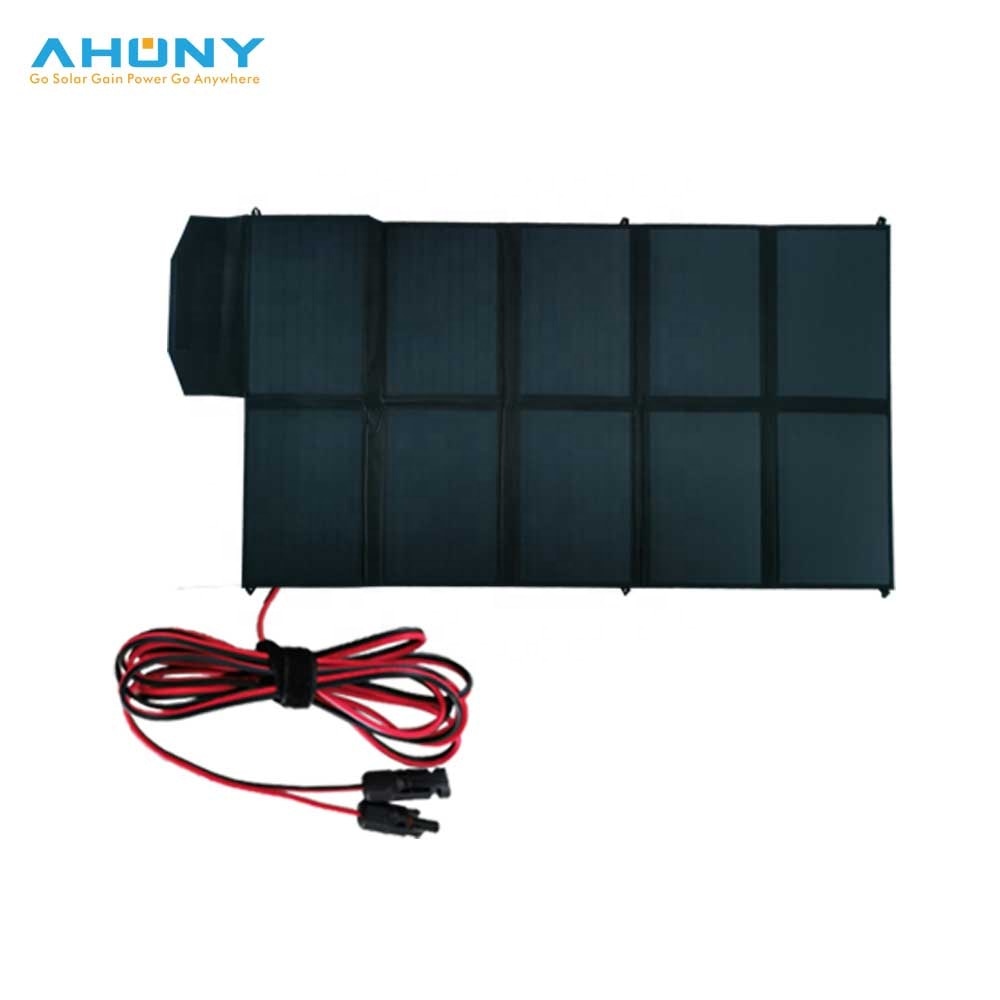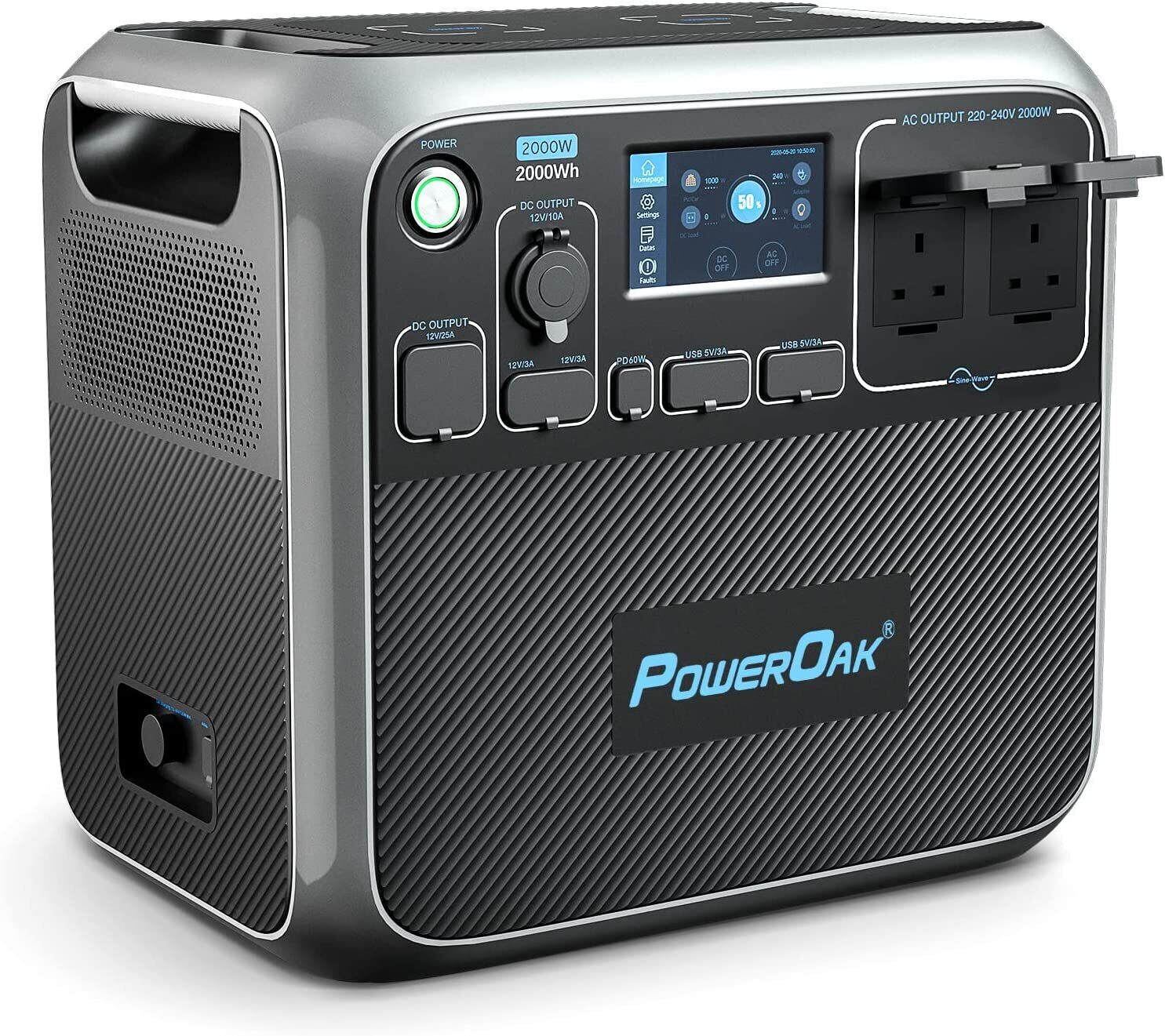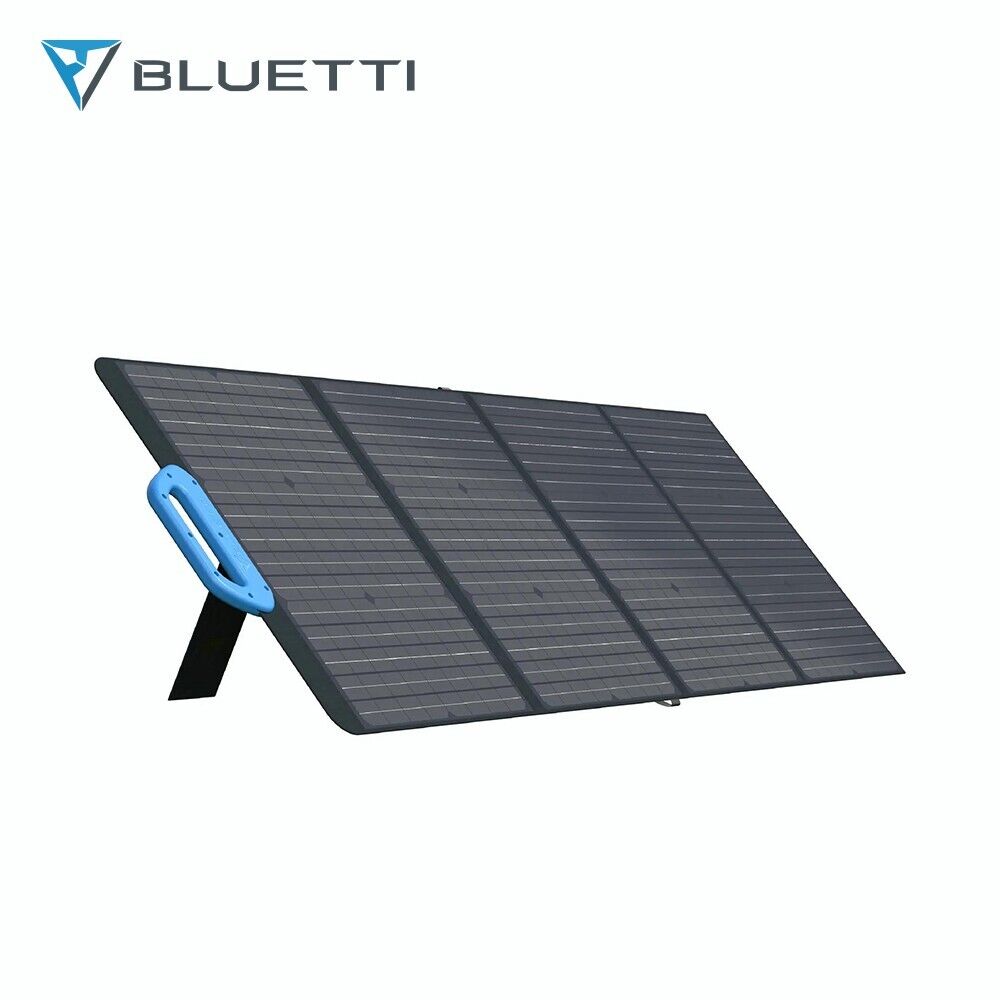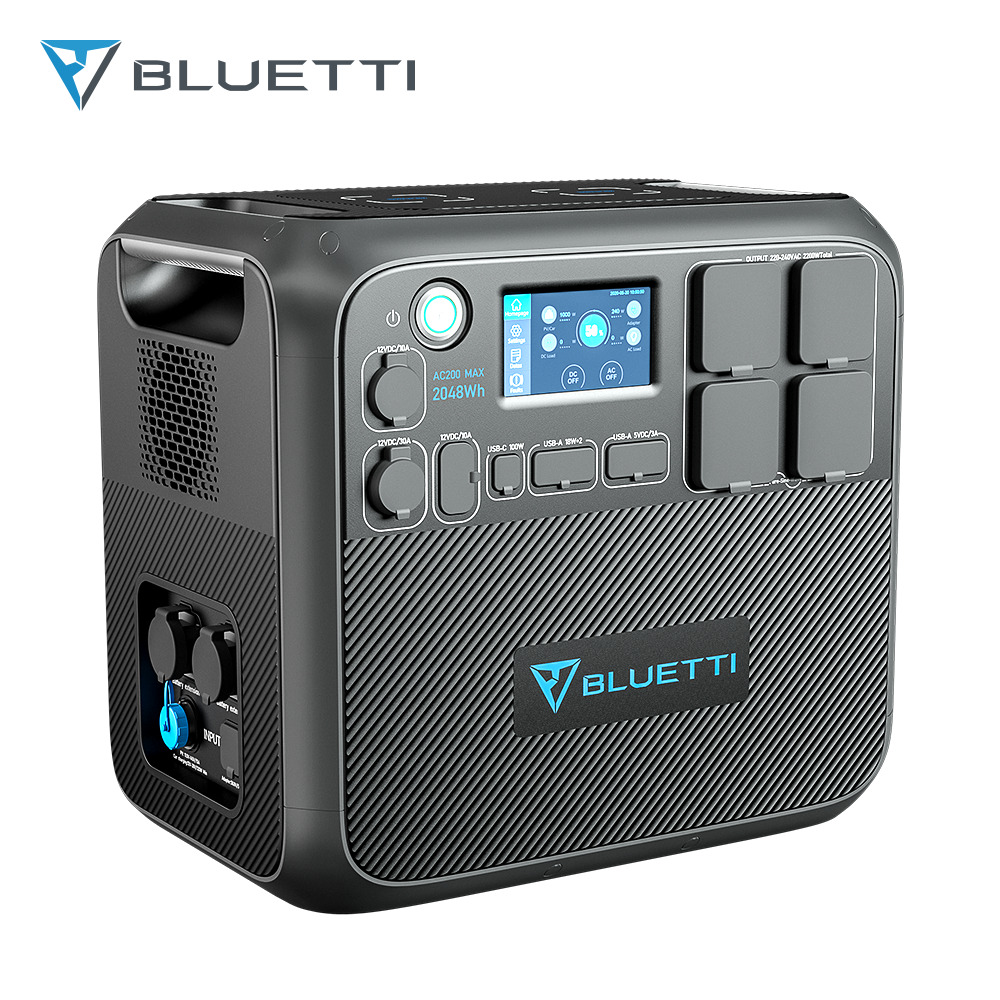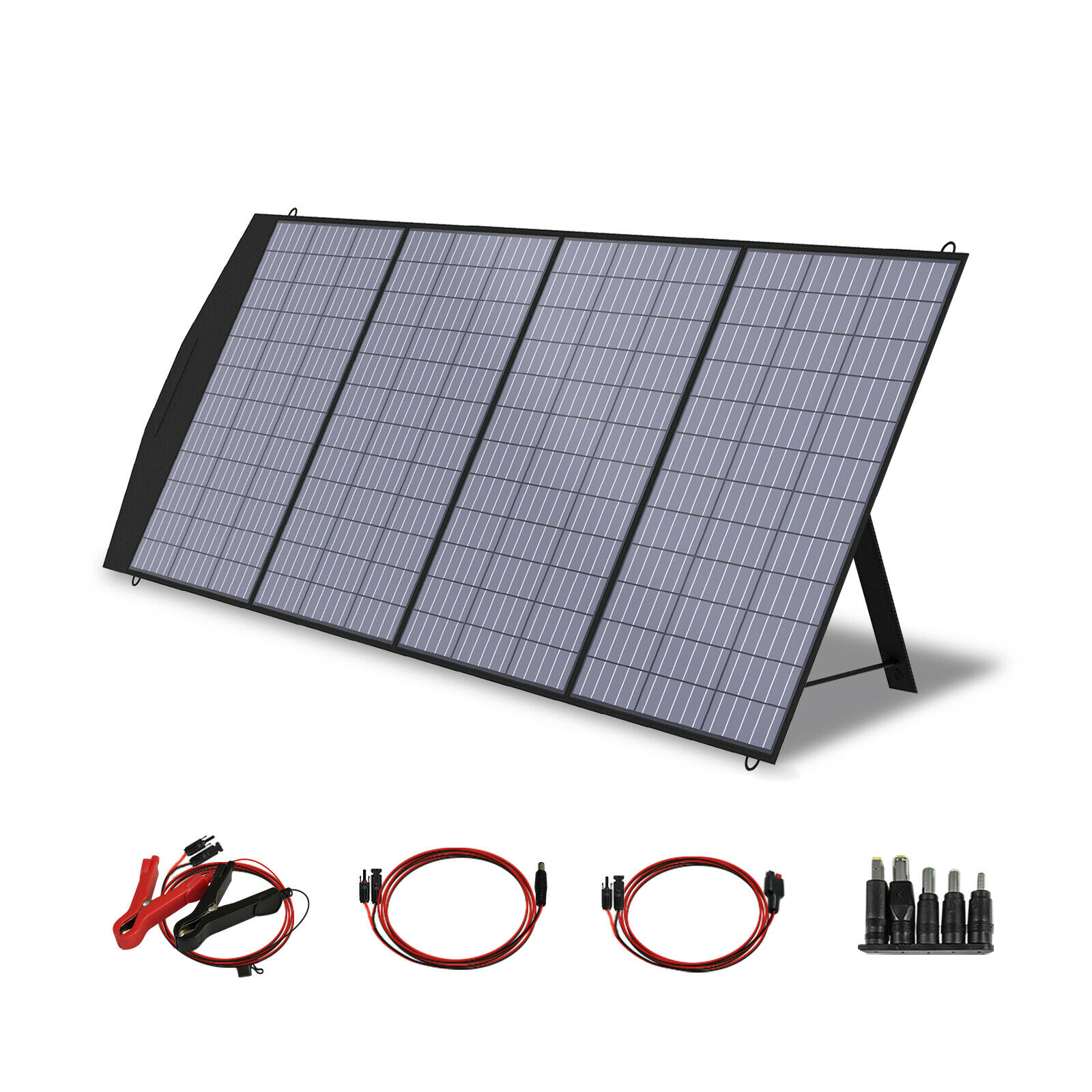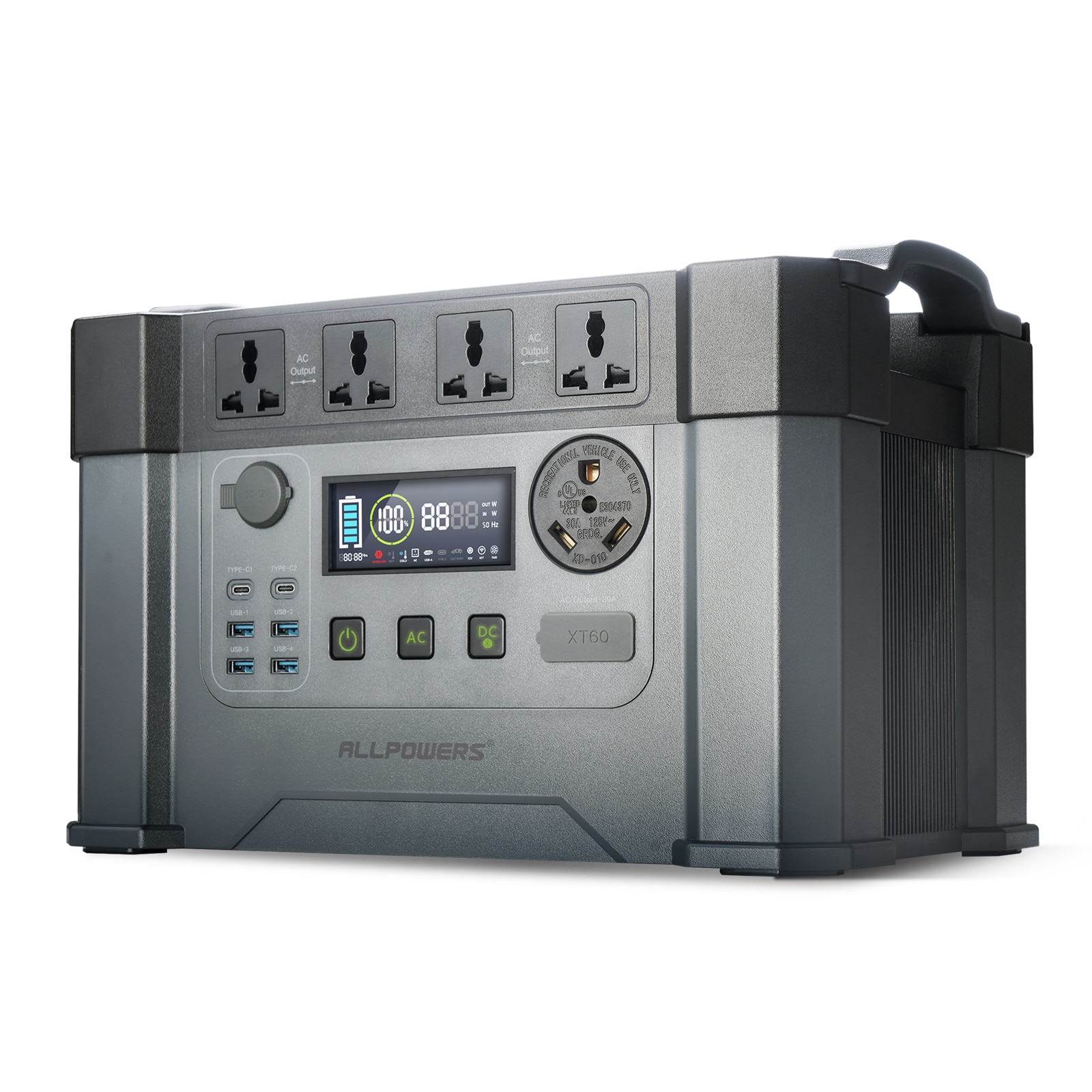
If you are lucky enough to have signed up to a fixed Economy 7 tariff, you can take advantage of a portable power station to store energy from the cheaper night rate and use it in the day time.
Solar power stations can also be charged from the mains.
Almost all portable solar power stations are not just limited to solar charging. You can charge them by plugging them directly into the mains. Many people now charge their portable power stations at the cheaper night rate on Economy 7 to power their morning activities, such as boiling the kettle for your morning coffee, drying your hair with a hairdryer and watching the mornings news on TV. Some people have gone as far as buying an electric plug in blancher to cook their breakfast, all powered by the stored electricity from the cheap night rate in a portable power station.
Morning and evening is when 90% of households use the most electricity. Charging your portable power station on the cheap Economy 7 night rate for the morning use is a fantastic way to save a lot of money on your energy bill. During the day, you can leave your portable power station charging via solar panels ready for the early evening. This solution cuts out our highest electricity usage hours and drastically lowers your bill each month, for some people, they have cut their electric bill by over half.
How do you use a portable power station to cut your electricity bill in half?
You are going to need a high wattage device with a good watts per hour. A standard kettle will run at 2000 watts, hairdryer at 1800 watts, blancher 1500 watts and LED 50 inch TV 100 watts. A electric heater you can run on 1000 watts. Let’s take an average scenario of a family house, 2 kids, husband and wife. You boil the kettle full twice, taking 10 minutes in total, you have used 200 watts of stored electricity. 20 minutes to dry your hair using the hairdryer, thats a further 360 watts. You cook breakfast on the blancher that takes 20 minutes, another 300 watts. Whilst doing this, the TV is on for an hour, thats 100 watts. You heat a room for an hour, a further 1000 watts. That’s 1960 watts used for your daily morning routine. According to sust-it.net you have spent 94p on electricity at standard day rate of 48p p/kWh. That’s £14.88 a month.
Let’s say from 5pm until 11pm you put the TV on for 4 hours, you boil the kettle 4 times, heat a room for 2 hours and cook dinner on the blancher which takes 20 minutes. You will use a further 2800 watts at a cost of £1.34 (£41.54 per month), however, this will cost you nothing because the portable solar power station has used the sun to charge the battery throughout the day and their should still be some daylight charging the battery between 5pm and 8pm during the summer months, giving you around 1000 watts more charge on the battery even as you use it. Just remember to plug it back into the mains on charge at the start of your cheaper night tariff, ready for the morning routine.
Your morning and evening routine will cost you around £56.42 each month or £677 per year using standard day rates. Using your Economy 7 night rate for the morning routine will cut that down by £7.44 per month (£89.28 per year). Using the solar panels to generate the electricity for the evening will save you around £41.54 per month or £498 per year. Your total yearly saving by using a portable power station will be around £539 per year and that is a big saving!
What type of portable solar power station do I need to run domestic appliances?
You will need at least a 2000 watt portable power station storing 2000 watts per hour with 4 x 100+ watt solar panels.
We recommend the following solar power station setups:
The BLUETTI AC200MAX 2200W with 2 x BLUETTI SP200 200w Solar Panels.
2200 watts will just about cover our plan to cut your energy bills in half. This setup will cost you around £2900. The solar panels cost a lot more than the ALLPOWERS 200W but are a lot more efficient and will take up less space whilst charging the power station at around the same rate. The AC200MAX also boasts the ability to add up to 2 more BLUETTI batteries taking your watts per hour up to an incredible 8192Wh. With a LiFePO4 battery, you can charge over 3500 times without degrading, giving you a system that will last over 5 years. It also has a 4800W surge allowing you to power the most energy hungry appliances in around the house.
The EF ECOFLOW DELTA Max 2400W with 4 x ALLPOWERS 200W Solar Panels.
This setup has the highest specifications possible giving you a whopping 2400 watts of power. You can also add more batteries to the Delta Max 2400W taking you up to a massive 6048 watts per hour. It also has a 4000 watt surge for those more energy hungry devices. This setup will cost just short of £3200, pricey but if you want the very best, highest efficiency and the ability to add or change battery power whilst never having to worry about having free electricity, you really cannot go wrong with this setup.
The POWEROAK AC200P 2000Wh 2000W with 3 x PowerOak 200W Monocrystalline Solar Panels.
Cheaper than the EF ECOFLOW and BLUETTI setups at around £2600 due to the lower wattage at 2000W, however it fits perfectly fine into our plan. The LiFePO4 battery will give you over 5 years of usage without degradation. With 2000Wh storage, it falls below the ECOFLOW DELTA and BLUETTI AC200 MAX but boasts a fast solar charge time of around 4 hours with 600 watts of input from the solar panels. With 10 hours of daylight, you will be able to save some extra money by using the stored electricity after a morning charge for your midday tasks and allow it to charge again for the evening use. It also has a 4800W surge, again allowing you to run more powerful devices but at a shorted time span.

